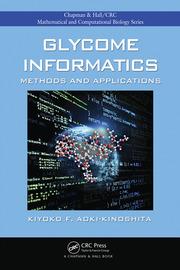Tools
- New! DrawRINGS: 2D HTML5-based glycan structure drawing tool for generating KCF and IUPAC format and/or querying the RINGS database, which current contains the glycan structures from Glycome-DB and an internally curated data set from the literature.
- Glycan Miner Tool: implemented based on Hashimoto et al., 2008 for mining alpha-closed frequent subtrees from a set of glycan structures
- Glycan Pathway Predictor (GPP) Tool Ver.2: implemented based on Krambeck et al., 2005, which was later improved in Krambeck et al., 2009, for dynamically computing the N-glycan biosynthesis pathway from a given glycan structure
- GlycomeAtlasV5: Visualization of glycome profiling data on human and mouse tissue samples, as described in Konishi et al., 2012. This latest release contains more detailed profile visualization functionality.
- Glycan Kernel Tool: Glycan structure classification tool, based on Jiang et al., 2011, for finding distinguishing glycan substructures in a target data set compared to a control.
The Kernel Tool is no longer supported. Please contact us if you would like the source code.
- MCAW Tool: glycan structure multiple alignment tool. Align a set of glycan structures and visualize the result as a glycan profile. This tool can be used to find commonalities among a group of glycan structures.
- TED-MCAW Tool: Glycan multiple alignment tool based on tree edit distance. Execute glycan multiple alignment for the query glycans, and visualize the result glycan profile as an image. In addition, JSON-based REST API is also available.
- Profile PSTMM Tool : implemented based on Aoki-Kinoshita et al., 2006, generate glycan profiles from glycan structure data which can be entered together with binding affinity data, for example, for a particular biological sample
The ProfilePSTMM functionality is no longer supported. Please contact us if you would like the source code.
|
Utilities
The utilities in grey are no longer supported. Please contact us if you would like the source code.
Documentation
- Help: brief users manual for the tools and utilities provided
- What's new?: latest updates
|


